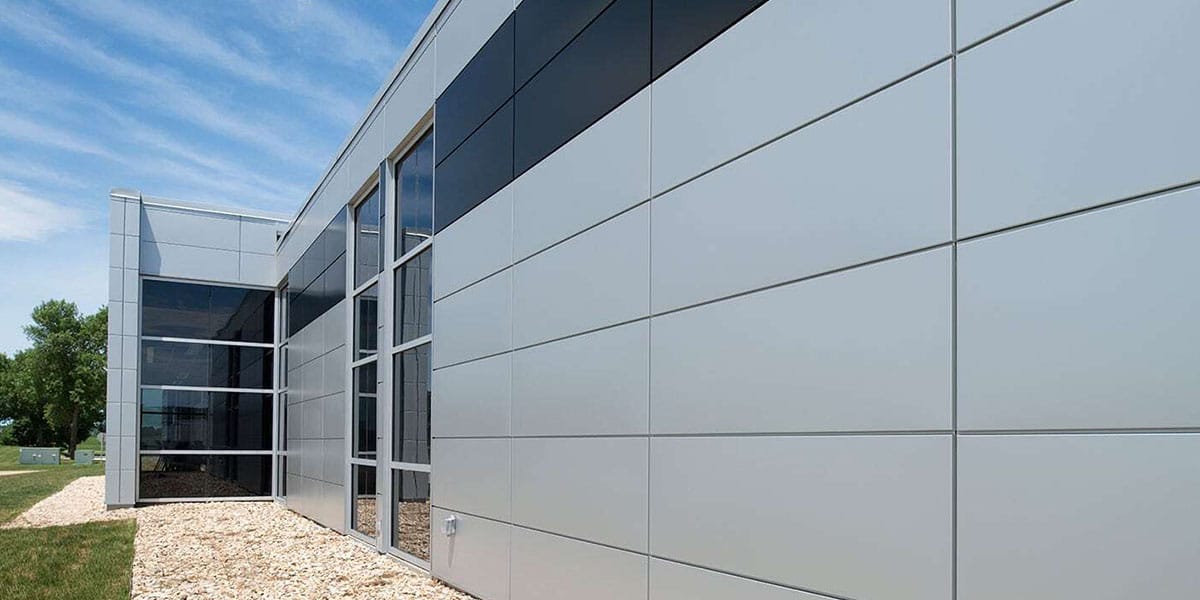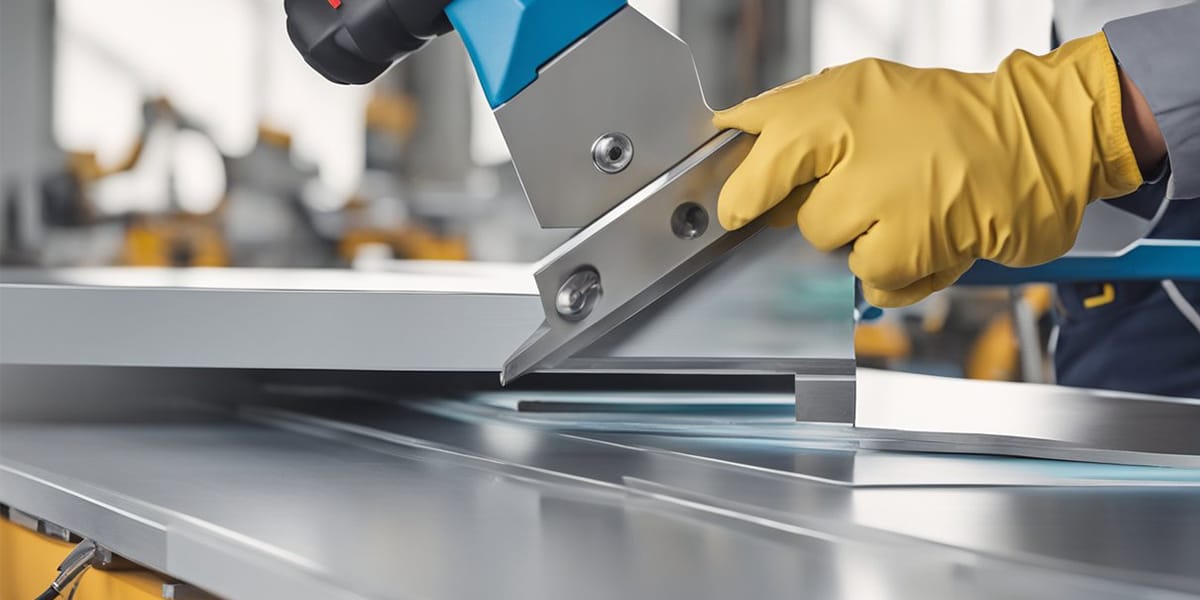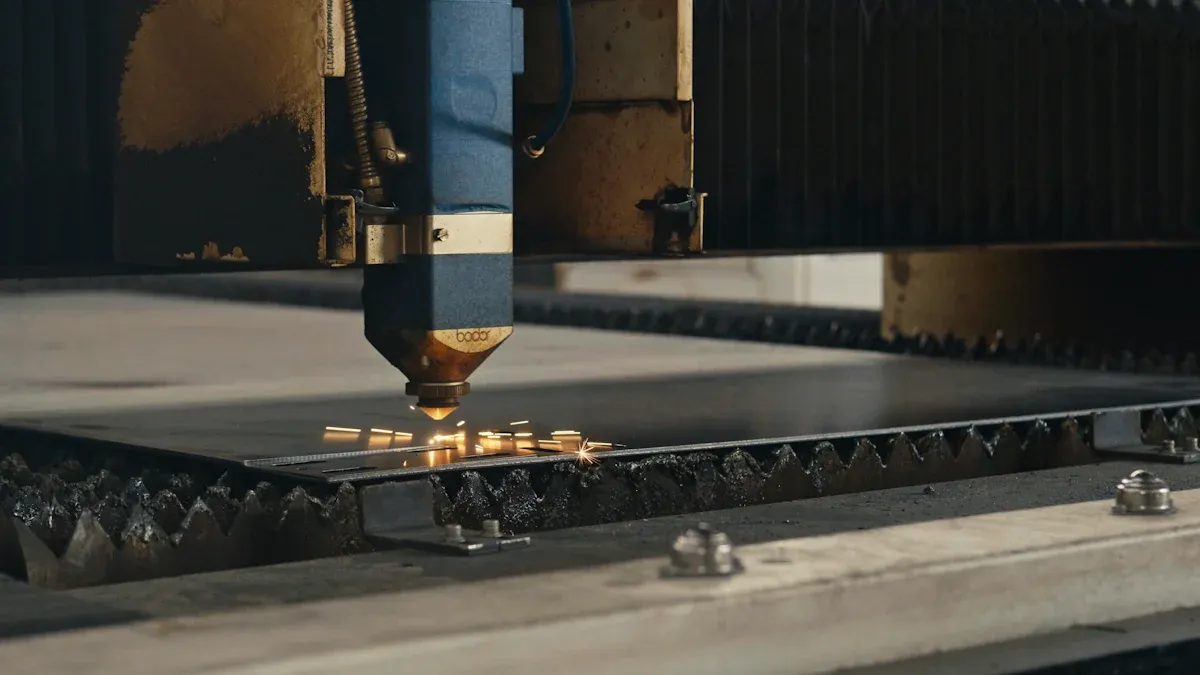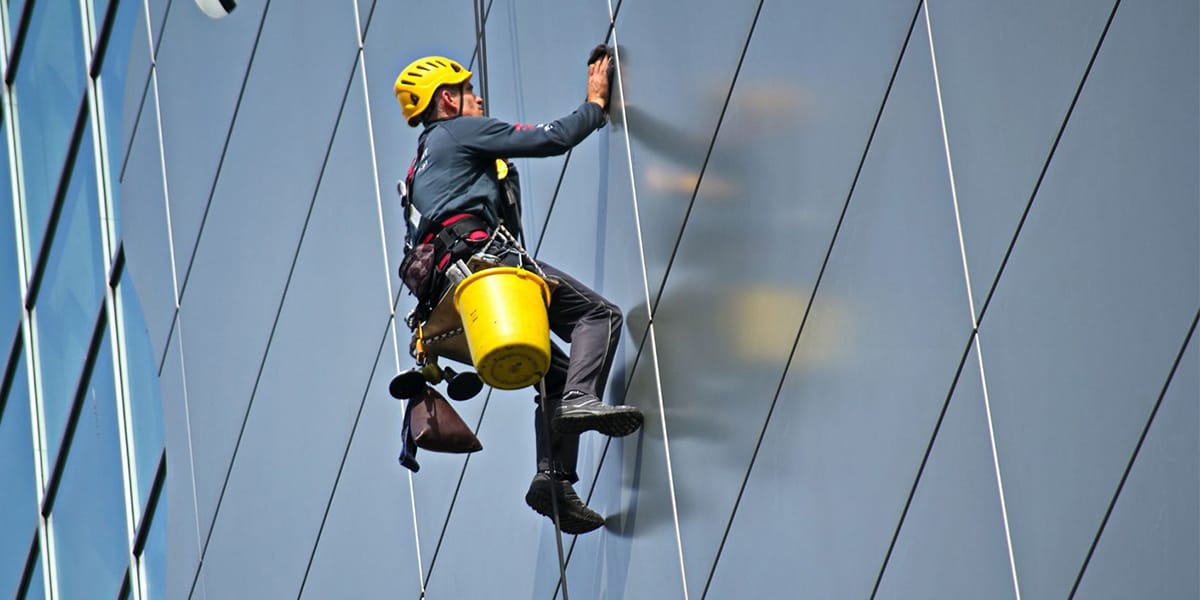
09 Aug A Complete Guide to Facade Aluminum Composite Panel Installation in 2025
Table of Contents
In 2025, facade aluminium composite panel installation will be a common sight in many cities. The market for facade aluminium composite panel installation is expected to reach nearly $7.9 billion, driven by increasing urban populations and the demand for energy-efficient buildings. Many applications now require fire-resistant and eco-friendly solutions. By following a step-by-step guide and preparing thoroughly, you can achieve excellent results with facade aluminium composite panel installation. Such guides help you navigate safety regulations and fluctuating material costs, ensuring successful facade aluminium composite panel installation.
Key Takeaways
Use the correct tools and safety gear. This helps you install aluminum composite panels safely and correctly.
Get the site ready by checking and cleaning all surfaces before you start.
Plan how you will place the panels. Leave small gaps for expansion. This helps with temperature changes and stops damage.
Follow each installation step in order. Start by measuring, cutting, and putting up the first panel carefully.
Check and clean your facade often. This keeps it safe, clean, and looking nice for a long time.
Tools & Materials
Essential Tools
You need the right tools to put up aluminium composite panels safely. In 2025, companies say to use new measuring tools and machines for cutting. These help you work with more accuracy. The table below lists the main tools you need for acp installation:
Tool Category | Examples of Essential Tools |
|---|---|
Measuring and Marking Tools | Tape measure, Carpenter’s pencil, Chalk line, Spirit level, Laser level, Framing square, Combination square |
Cutting Tools | Circular saw with carbide-tipped blade, Jigsaw with metal-cutting blades, Utility knife, Tin snips |
Drilling and Fastening Tools | Power drill with drill bits, Screwdriver set (manual and power), Rivet gun, Hammer |
Specialized Fabrication Tools | CNC router, Panel saw, V-grooving machine |
Lifting and Positioning | Suction cup lifters, Scaffolding, Scissor lift, Panel carts |
Adhesives and Sealants | Construction adhesive, Silicone sealant, Caulking gun |
Cleaning and Finishing Tools | Microfiber cloths, Isopropyl alcohol, Soft bristle brush, Paint roller and tray |
Laser levels and CNC routers help you make straight lines and smooth cuts. Better adhesives let you stick acp panels on without using only screws or rivets. Always check your tools before you start to make sure they work well.
Aluminium Composite Panels & Accessories
There are many types of aluminium composite panels and accessories for building facades. The core and finish change how safe, heavy, or warm the panels are. The table below shows the most common acp core materials in 2025:
Core Material Type | Fire Safety Level | Weight | Insulation Quality | Typical Use Case |
|---|---|---|---|---|
Polyethylene (PE) | Low | Light | Poor | Low-rise buildings, signage |
Fire-Retardant (FR) | High | Moderate | Good | High-rise buildings, public areas |
Inorganic (Mineral) | Very High | Light | Excellent | Hospitals, schools |
For outside walls, PVDF-coated acp panels are best because they last longer and stand up to weather. You should use special brackets and fasteners to hold the aluminium composite panels tight. Make sure the panels line up and have space between them. This keeps water and dust out. In tough weather, you might need extra coatings on the accessories to protect the aluminium composite material.
Tip: Leave space for the acp panels to get bigger or smaller with temperature changes. This stops cracks and keeps your facade looking nice.
Safety Gear
Safety is very important when working with acp and aluminum composite panels. You should wear safety glasses, gloves, a dust mask or respirator, a hard hat, and steel-toed boots. These keep you safe from sharp edges, dust, and things that might fall. Get good training and follow the rules from the manufacturer to stay safe and use your tools the right way.
Site Preparation
 Substrate Inspection
Substrate Inspection
Check the substrate before you start installing acp. This helps you stop problems later. Look for cracks, holes, or loose spots. Fix any damage so the surface stays strong. Make sure the area is dry and clean. If you see moisture, wait for it to dry. Use the table below to help you check:
Aspect | Requirement / Practice |
|---|---|
Coordination | |
Weather Barrier | Put a weather-resistant barrier over the sheathing. |
Sub Girt System | Add a sub girt system for a sealed air barrier. |
Review Support Conditions | Check if everything lines up and is attached well. |
Review Construction Details | Look at flashings, wall openings, and places where things go through. |
Temporary Protection | Plan how to keep acp panels safe during and after installation. |
Observation & Repair | Set up ways to check and fix panels after you finish. |
Follow local building codes and manufacturer rules. Always check if the substrate can hold the aluminium composite panels.
Surface Cleaning
Get the surface ready before you put on acp. Remove dust, dirt, and grease first. Use a soft cloth with isopropyl alcohol for tough stains. For light cleaning, use mild detergent and water. Do not use harsh chemicals that leave stuff behind. The table below shows cleaning methods:
Cleaning Method | Description | Usage Tips |
|---|---|---|
Isopropyl Alcohol | Gets rid of stains, oils, and sticky stuff. | Mix with water, use a soft cloth, only use on stains. |
Ammonia-Based Cleaners | Breaks down grease and stains. | Mix with water, scrub gently, rinse well. |
Citrus-Based Cleansers | Good for the environment and light cleaning. | Put on, let sit, scrub in circles, rinse and dry. |
Mild Detergents | Safe for acp, removes dirt. | Mix with water, use a sponge, rinse, and dry to stop water spots. |
Tip: Always wear clean gloves when you touch acp panels. This stops fingerprints and static.
Measuring & Marking
Measuring and marking right helps you avoid mistakes. Work in a clean spot to keep panels safe. Use a measuring tape and level to get the right size. Mark where brackets, screws, and adhesive will go. Double-check your marks before you cut or drill. Follow these steps:
Use a straight edge and tape to mark lines on the acp panels.
Mark where to drill on the panels and wall.
Line up each panel with your marks and check with a level.
Start at one corner and move out to keep panels straight.
Always check again before you cut or make holes.
Taking your time with measuring and marking makes sure the acp panels fit well. This also helps you stop gaps and keeps the facade neat.
Planning & Layout
Panel Arrangement
You should plan how to place your panels before starting. Good planning makes your building look nice and work well. Many experts now use special computer models with graphs. These models let you try out different panel layouts. You can see how each layout changes energy use and sunlight inside. Digital tools help you make designs that can change if needed. If the building needs change, you can adjust the layout easily. You can also add things from nature to your design. This makes people inside feel more comfortable. Using advanced software helps you keep the building safe and good for the environment.
Tip: Try out different panel layouts on a computer first. This helps you save time and avoid mistakes.
Flexible planning lets you change the layout for different uses.
Adding nature to your design makes the space healthier.
Special design software helps you make accurate layouts.
Focus on making the layout easy to change and use.
Framing System
A strong frame holds up your aluminium composite panels. It keeps your cladding safe and in place. Most frames use strong aluminum or steel tubes. These materials do not rust and make the wall strong. You should put the frame pieces up and down to match the panel size. Make sure the frame is straight and tight against the wall. Some new systems use special parts that help line up the frame. These systems work for new and old buildings. They also follow fire safety rules and help save energy. You can use different brackets and rails to fit many needs.
Expansion Gaps
You need to leave small spaces between panels. These spaces let the panels move when it gets hot or cold. If you do not leave gaps, the panels can bend or break. Experts say to leave a 3 to 5 mm gap between panels. For hanging panels, use a 10-15 mm gap with silicone sealant. Always use a sealant shaped like an hourglass and a backer rod that is bigger than the gap. The table below shows important rules for expansion gaps in cladding:
Guideline Aspect | Recommendation/Detail |
|---|---|
Sealant Shape | Hourglass-shaped sealant preferred |
Sealant Width-to-Depth Ratio | Width should be twice the depth of the gap |
Backer Rod Diameter | About 25% larger than the joint width |
Joint Size Design | Four times the expected movement |
Sealant Application | Use wet sealants at average temperature |
Hanging Method Expansion Gap | 10-15 mm gap filled with silicone sealant |
Sealant Tooling | Use proper tools, not fingers |
Always check the instructions from the manufacturer for your cladding. Planning well and leaving the right gaps helps your wall last longer and look good.
Step-by-Step Guide to Facade Aluminium Composite Panel Installation
 Cutting Panels
Cutting Panels
Cutting acp panels is an important part of the process. You want your cuts to be straight and smooth. This helps you use the panels well and not waste any. Use the right machines and tools for the job. Here are some ways to cut panels:
Use special machines like CNC routers or laser cutters for neat cuts.
Pick cutters that can cut and finish at the same time to stop rough edges.
Try to cut without making dust to keep your area clean and protect the panels.
Hold the panels tight and line them up before you cut to save material.
Use cutting heads that stop the leftover pieces from bending, so the panel stays strong.
Cut from the back side to keep the front looking nice.
Smooth the edges with a file or sandpaper to get rid of rough spots.
Always measure and mark where you want to cut before you start.
These steps help you make the panels fit just right. Smooth edges make it easier to join panels and look better on your building.
Tip: Check your measurements again before you cut. This helps you save time and materials.
Installation Process Overview
The installation process for facade aluminium composite panel installation has clear steps. You need to get ready, measure, cut, and put up each panel carefully. Here is a simple list:
1. Gather all your tools, safety gear, and materials for acp sheet installation. 2. Get the wall ready. Make sure it is clean, dry, and smooth. 3. Measure the space and mark where each acp panel will go. 4. Cut and shape the panels with the right machines. 5. Put on a waterproof barrier and flashing to keep water out. 6. Set up a grid on the wall so the panels go on evenly. 7. Attach the panels with profiles, screws, and rivets. Use top caps to cover spaces. 8. Take off the protective film after you put up the panels.
Follow each step to get a strong and weatherproof finish. Be safe and work carefully at every stage.
Mounting the First Panel
Putting up the first panel is very important for acp sheet installation. Start at a corner or where two areas meet. This helps you keep all the other panels straight. Follow these steps:
Measure the first panel size very carefully. If you make a mistake, it affects all the other panels.
Use a mounting system to keep the panel straight.
Work on corners and special shapes first to keep things neat.
Connect all clips and main profiles before you screw the panel to the wall.
Use shims to level the panel and clips to hold it in place.
Read the manufacturer’s instructions and ask your supplier if you have questions.
Note: The first panel matters most. Take your time and do it right.
Panel Alignment & Joining
You want all the panels to line up and join well. This makes your facade look neat and professional. Use the right tools and ways to install the panels. The table below shows some good tips:
Method/Aspect | Description |
|---|---|
Adhesive Use | Spread good adhesives evenly on clean surfaces. |
Mechanical Fastening | Use stainless steel or aluminum screws or rivets with pre-drilled holes. Do not make them too tight. |
Panel Alignment | Use guide marks, clamps, suction cups, or supports to keep panels in place while fastening. |
Tools | Use levels, measuring tapes, and drills for careful work. |
Thermal Expansion | Leave small gaps for expansion so panels do not bend. |
Spacers | Use spacers to keep even spaces between panels. |
Inspection & Adjustment | Check alignment often and fix as needed for a smooth finish. |
Environmental Considerations | Protect panels from bad weather while you work. |
Wipe away any glue that comes out before it dries. Make sure all edges are smooth and clean before you join the next panel. This stops gaps and keeps the acp panels looking good.
Fastening & Sealing
You need strong fastening and good sealing for acp sheet installation to last. Use both glue and screws or rivets. This keeps the panels in place and stops them from moving or falling. Here are some tips:
Use both glue and screws or rivets to attach the panels to the frame.
Pick sealants that match the color for the joints. This keeps water out and looks nice.
Choose sealants that can move with the panels when it gets hot or cold.
Put sealant in a smooth, even line along all the joints.
Good fastening and sealing protect your facade aluminium composite panel installation from wind, rain, and sun. Always follow the manufacturer’s advice for the best results.
Weatherproofing
Weatherproofing is the last step in the process. You want to keep water out and protect your building for a long time. Use these best ways:
Put in a ventilated rainscreen system. This lets water drain and air move behind the panels.
Use fasteners that do not rust, like stainless steel, for extra strength.
Put weatherproof coatings like PVDF or powder coatings on the panels.
Treat panel edges with varnish or tape to stop water from getting in.
Add vapor barriers and drainage systems behind the panels.
Clean the panels with mild soap and water to keep coatings strong.
Check and replace sealants when needed to stop leaks.
Tip: Look at your facade often for water damage. Fixing problems early saves money and keeps your building safe.
If you follow this step-by-step guide, you can get a strong, neat, and weatherproof facade aluminium composite panel installation. Each step builds on the last, so take your time and do your best. This way, your acp project will last a long time and look great.
Safety Practices
Handling Panels
You need to be careful when you move aluminum composite panels. If you do not follow the right steps, you can get hurt or damage the panels. If you store panels the wrong way or handle them roughly, they can get scratched or broken. Bending panels the wrong way can make cracks or mess up the paint. Always use both hands or suction cup lifters to move panels. Store panels flat and keep them away from dust, smoke, or strong wind. These things can make the panels weak and not last as long.
Tip: Take off the protective film soon after you finish installing. If you wait too long, the sticky part can stay on the panel and cause trouble.
Fire safety is very important too. The Lacrosse Building fire in Melbourne showed that unsafe panels can be very dangerous. Panels with a core made of polyethylene can catch fire and spread flames fast. Always check if your panels follow fire safety rules. Use panels with fire-retardant or mineral cores to stay safer.
Watch out for these common dangers:
Scratches or breaks from rough handling
Damage from bending or cutting the wrong way
Panels not staying flat, which makes them weaker in wind
Using panels outside without the right coatings
Look at every panel before you put it up. If you see any damage, do not use that panel.
Working at Heights
You will often need to work high up when you install facade panels. This can be risky. You must wear the right safety gear every time. Put on a hard hat and a harness. Make sure your harness is hooked to something strong. Check ladders and scaffolding before you climb. They must be steady and not broken.
Always wear harnesses and hard hats
Attach harnesses to strong anchor points
Set up ladders and scaffolding the right way
Look over your equipment before you use it
Do not work in bad weather like strong wind or rain
OSHA says everyone working high up should get regular training and have someone watching. Good training helps you see dangers and use your gear the right way.
If you follow these safety steps, you help keep yourself and your team safe. Careful handling and safe work at heights help you finish your project without anyone getting hurt.
Finishing & Inspection
 Cleaning Panels
Cleaning Panels
You want your acp facade to look great and last a long time. Cleaning the panels the right way helps you keep their appearance and protect the surface. Follow these steps for best results:
Inspect your acp panels every year. Local weather can affect how often you need to check.
Remove leaves, grass, and other debris. This stops dirt from building up and keeps the coating strong.
Use a soft brush or a high-pressure cleaner (no more than 50 bar) with clean water to wash the panels.
If you need soap, pick a mild cleaner with a neutral pH. Test it on a small spot first.
Always clean from the top down and rinse well to remove any leftover cleaner.
Do not clean panels when they are hot from the sun. Wait until the surface cools below 40°C.
Tip: Regular cleaning helps you spot small problems early and keeps your acp facade looking new.
Final Checks
After you finish installing the acp panels, you need to make sure everything meets high quality standards. Walk around the building and look at each panel closely. Check for scratches, dents, or color differences. Make sure all joints have sealant and that supports and decorative parts stay in place. Look for any gaps or loose fasteners. Good quality control at this stage helps you avoid bigger problems later.
You can use a checklist like this:
Inspection Point | What to Look For |
|---|---|
Panel Surface | Scratches, stains, or defects |
Joints & Sealants | Gaps, missing or cracked sealant |
Fasteners & Supports | Loose or missing parts |
Color & Finish | Uniform color and shine |
Addressing Issues
If you find problems during your inspection, you need to fix them right away. Some common issues with acp panels include delamination, bubbling, color mismatch, and flatness errors. You can prevent delamination by applying adhesive evenly and letting it cure at the right temperature. Bubbling often happens if you do not store adhesives dry or if you skip steps during lamination. Always follow the instructions for mixing and applying adhesives.
Color mismatch or uneven finishes can happen if you use panels from different batches. To keep the quality high, use materials from the same batch and stick to the same coating process. Regular equipment checks and operator training help you avoid flatness or cutting mistakes. Quality control means you check your work at every step, not just at the end.
Remember: Good quality control and quick fixes help your acp facade stay strong and look its best for years.
Maintenance Tips
Routine Cleaning
You need to keep your cladding clean to help it last longer and look good. Use a soft sponge or cloth with mild detergent and water. This removes dirt and grit without scratching the surface. In areas with lots of pollution or dust, you should clean your cladding more often. If you live in a city or near a factory, dirt can build up quickly. Start by rinsing the panels from top to bottom with moderate water pressure. Then, use gentle soap if needed. Always clean when the weather is not too hot or cold. This helps prevent damage from thermal changes.
Avoid harsh chemicals like caustic soda or acids. These can harm the lacquer on your cladding.
Follow these steps for best results:
Test any cleaner on a small spot first.
Use horizontal strokes, then vertical.
Dry with a lint-free cloth.
Never use abrasive materials.
Inspecting for Damage
Check your cladding at least twice a year. Look for cracks, dents, or loose panels. Pay close attention after storms or strong winds. If you see black marks or stains, clean them right away. Watch for signs of water getting behind the cladding, like bubbling or peeling. Early detection helps you fix small problems before they get worse.
What to Check | What to Look For |
|---|---|
Panel Surface | Scratches, stains, or dents |
Joints & Sealants | Gaps or missing sealant |
Fasteners | Loose or missing screws/rivets |
Edges | Signs of water or rust |
Repairs & Replacement
If you find damage, you can fix small holes with epoxy. For bigger problems, you may need to replace a panel. Start by carefully removing the damaged cladding. Make sure the area underneath stays dry and clean. Seal the edges with waterproof tape. Cut the new panel to fit and use gutter sealant on the back edges. Slide the new cladding under the old one and fasten it in place. Seal all the edges to keep water out. Always allow for thermal movement so your cladding does not crack.
Regular care and quick repairs keep your cladding strong and help maintain the quality of your building.
If you follow every step, your facade will look great and last long. Getting ready, measuring well, and keeping up with care help your panels stand up to rain, rust, and fire. ACPs stay tough and look fresh if you clean them and check them often. Always pick the right tools and wear safety gear. Ask experts for help if you are not sure.
When you focus on each detail, your building will stay nice and safe for a long time.
FAQ
What is the best way to cut aluminum composite panels?
You should use a CNC router or a circular saw with a carbide-tipped blade. These tools give you smooth, straight cuts. Always measure twice before cutting. Wear safety glasses and gloves for protection.
How do you keep panels from warping or bending?
Leave expansion gaps between panels. Use the right frame and fasteners. Store panels flat and away from heat. Check for damage before you install each panel.
Can you install ACP panels in rainy weather?
You should avoid installing panels in the rain. Wet surfaces can cause poor adhesion and sealing. Wait for dry weather to get the best results and a longer-lasting facade.
How often should you clean your ACP facade?
Clean your ACP facade at least twice a year. In dusty or polluted areas, clean more often. Use mild soap and water. Avoid harsh chemicals that can damage the surface.
What should you do if a panel gets damaged?
Replace damaged panels as soon as possible. Remove the old panel, check the frame, and install a new one. Seal all edges to keep water out. If you need help, contact a professional.



 Substrate Inspection
Substrate Inspection Cutting Panels
Cutting Panels Cleaning Panels
Cleaning Panels